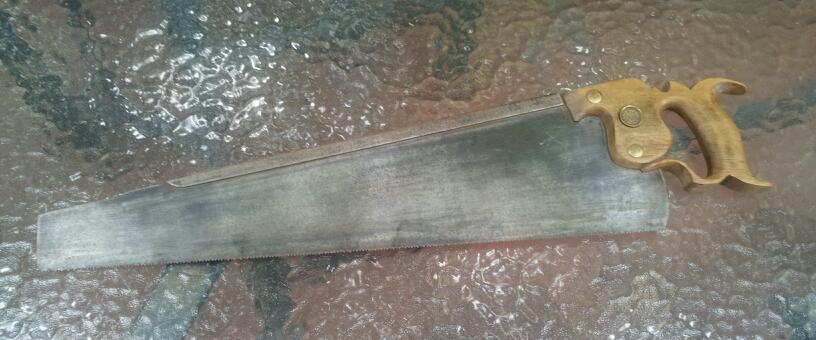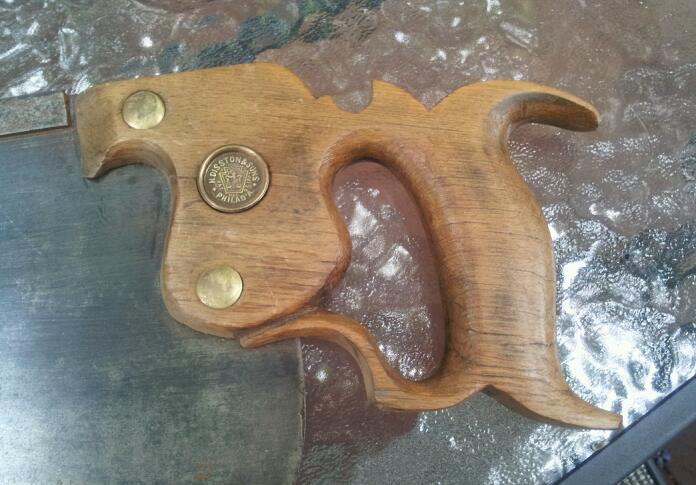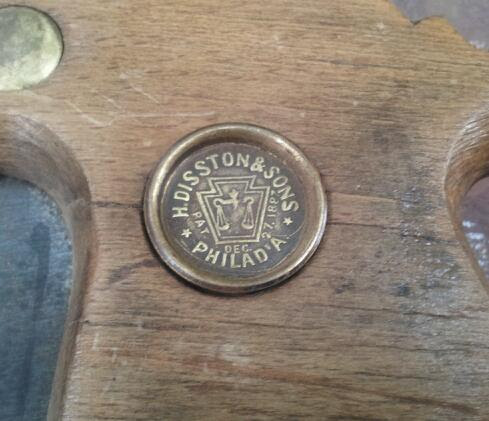My grandfather was a carpenter and cabinetmaker by trade, and passed away a year ago. I've been helping my Mum identify some of the tools in his workshop and came across some real lovely tools in there, but today I found an unusual saw that I haven't been able to find any information on it. Its a Disston 11 point crosscut panel saw with full length back and a nib! I've never seen anything like it:

It has a nice handle, and the medallion dates it to 1888-1896 if the medallion is original:

There is no stamp on the back, and the etch is barely visible but I couldn't make out any model number on it.
I'm planning to keep it for my own use, as it cuts fantastically well and its balance is superb, but I'd love to know more about it!

It has a nice handle, and the medallion dates it to 1888-1896 if the medallion is original:

There is no stamp on the back, and the etch is barely visible but I couldn't make out any model number on it.
I'm planning to keep it for my own use, as it cuts fantastically well and its balance is superb, but I'd love to know more about it!






